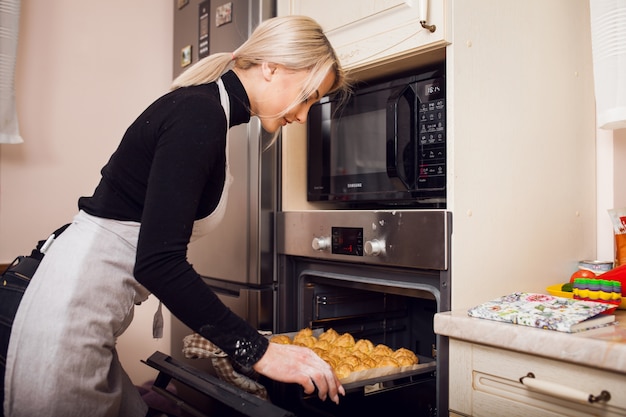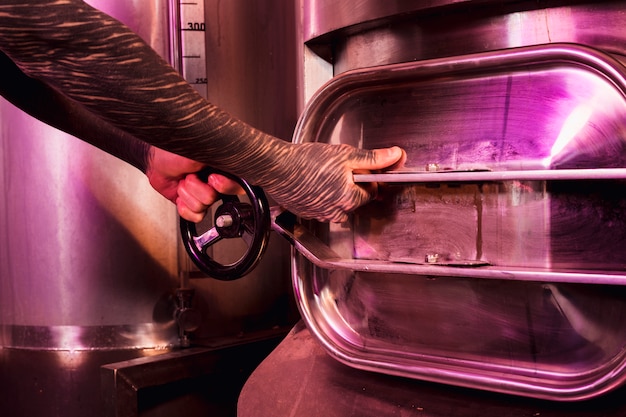You've got a gorgeous piece of tri tip, ready to star in your next dinner. It's a real showstopper, but you're probably wondering, "How long does this thing need in the oven?" Don't worry, you've come to the right place! I've spent countless hours in the kitchen, grappling with ovens and trying to achieve that perfect roast. Trust me, I've been there, and I'm here to guide you. It's not rocket science, but it does require some finesse. Let's delve into the world of tri tip and get you on the path to a juicy, flavourful masterpiece.
Part 1: Understanding Tri Tip

First things first, let's get acquainted with our star ingredient. Tri tip, for those unfamiliar, is a cut of beef from the bottom sirloin. It's a lean cut, often described as having a "triangle" shape, hence the name. It’s known for its intense flavour, boasting a good amount of marbling for that extra juicy kick. It's incredibly versatile, perfect for grilling, roasting, or even slicing for sandwiches. But for today, we're focusing on roasting, so let's get cooking!
Subheading 1: Tri Tip – A Culinary Star
I have to confess, tri tip is one of my absolute favourite cuts of meat. It's just so darn delicious, especially when cooked right. The lovely, tender texture, that deep, rich flavour, it really hits the spot. And it's not just about the taste; the versatility of tri tip makes it a winner in my book. You can do so much with it, and every time, it delivers. Think juicy steaks, flavorful roasts, even fantastic sandwiches – tri tip can handle it all!
Subheading 2: Tri Tip’s Secret Weapon - Marbling
Let's talk about marbling. This is where the real magic happens. Marbling refers to the streaks of fat running through the muscle. It's like the secret ingredient that makes tri tip sing. The fat renders during cooking, adding juicy flavour and keeping the meat moist and tender. Look for tri tip with good marbling – you'll spot it with those beautiful streaks of white throughout the red muscle. It's a sign that you're in for a treat!
Part 2: The Oven – Your Roast’s Best Friend

Right, so we've got our tri tip ready to go. Now it's time to set the stage for our culinary masterpiece: the oven. You want to make sure you've got the perfect setting for a beautiful roast.
Subheading 1: Preheating – A Must-Have
Preheating your oven is like giving your roast a warm welcome. It’s a must-do, trust me on this one. Let that oven get nice and hot, because you want the meat to cook evenly and develop that lovely crust. For tri tip, I usually aim for about 400°F (200°C). It's like giving your roast a head start, ensuring it cooks beautifully from the inside out.
Subheading 2: Oven Temperature – The Goldilocks Zone
Now, here's the fun part: finding the sweet spot for oven temperature. A good rule of thumb for tri tip is to cook it at a medium-high heat, around 400°F (200°C). This ensures a good sear on the outside while keeping the inside juicy and tender. Imagine a perfect balance – a crisp exterior with a tender, succulent centre – that's what we're aiming for!
Part 3: The Art of Seasoning

We've got our tri tip, we've got our oven preheating, now it's time to make things truly sing. We're talking about seasoning, the flavour booster that takes your roast from good to glorious.
Subheading 1: Simple is Best
Now, I know there are a million seasoning combinations out there, but for me, simple is best. Start with some good quality salt and pepper. A generous pinch of each is all you need to let the natural flavour of the tri tip shine through. Think of salt and pepper as the foundation, letting the inherent flavour of the tri tip take centre stage.
Subheading 2: A Touch of Magic
If you’re feeling adventurous, you can add some other spices to the mix. I’m a big fan of garlic powder, onion powder, and paprika. These add a depth of flavour that’s simply divine. They're like the supporting actors, adding a touch of complexity and richness to the main event.
Subheading 3: The Power of Herbs
Don't forget the power of fresh herbs! A sprig of rosemary or thyme tucked under the skin of the tri tip can add a beautiful, aromatic touch to your roast. Think of them as the final flourish, adding a fragrant touch that elevates the entire experience. Just make sure to remove the herbs before slicing and serving, so they don't get in the way of your enjoyment.
Part 4: The Roast – A Step-by-Step Guide
Alright, so we’re all prepped and ready to go. Let's get this roast cooking!
Subheading 1: Getting Started
Place your seasoned tri tip in a roasting pan. If you want to add a bit of moisture to the bottom of the pan, you can add a cup of water or broth. Just don’t go overboard, we don’t want a soggy roast! Adding a bit of moisture to the pan helps create steam, which aids in cooking and keeps the meat moist. A touch of broth or water can elevate the flavour too, but keep it moderate – we're not going for a swimming pool here!
Subheading 2: Cooking Time – A Guiding Hand
Here's the part you've been waiting for: the cooking time. It's important to remember that cooking time will vary depending on the size and thickness of your tri tip. A good rule of thumb is to cook for about 15-20 minutes per pound at 400°F (200°C) for a medium-rare roast. But keep in mind, every oven is a little different, so don't be afraid to adjust based on your own experience.
Subheading 3: Checking for Doneness
You want to make sure your tri tip is cooked to your liking, so check it regularly with a meat thermometer. For medium-rare, aim for an internal temperature of 130-135°F (54-57°C). For medium, go for 140-145°F (60-63°C).
To avoid overcooking, you can also check for doneness by pressing on the meat. If it's firm, it's likely well-done. If it's slightly springy, it's likely medium. If it's quite soft, it's likely medium-rare or rare. However, a meat thermometer is the most reliable way to ensure your tri tip is cooked to your liking.
Part 5: Resting – The Key to Juiciness
Once your roast is cooked to perfection, don’t jump straight into slicing it up! Let it rest for at least 10-15 minutes before carving. This allows the juices to redistribute throughout the meat, resulting in a super juicy and tender roast.
Subheading 1: Tenting the Roast
To keep the roast warm and juicy while it rests, loosely cover it with aluminium foil. This will trap the steam and help to keep the meat tender. Imagine the foil as a little blanket, keeping the heat and moisture in, so your tri tip stays succulent.
Subheading 2: The Importance of Patience
I know it's tempting to dig in right away, but trust me, the wait is worth it! Let that tri tip rest, and you'll be rewarded with a melt-in-your-mouth roast. It's like waiting for the perfect moment, allowing the flavours to deepen and the texture to become even more delightful.
Part 6: Serving Suggestions
Right, your beautiful roast is ready to go. Let's talk about serving it up in style.
Subheading 1: side dish Heaven
A roast like this calls for some star side dishes. My personal favourites include roasted vegetables like asparagus, Brussels sprouts, or sweet potatoes. A creamy mashed potato or a hearty salad also pair beautifully with tri tip. Think about contrasting textures and flavours – the crispness of roasted vegetables complements the tender tri tip, while the creamy richness of mashed potatoes provides a delightful counterpoint.
Subheading 2: Sauce It Up
To take your roast to the next level, consider adding a sauce. A simple pan sauce made from the drippings in your roasting pan is always a winner. You can also go for a classic red wine sauce or a tangy chimichurri sauce. Let the sauce be the finishing touch – a splash of flavour and colour that elevates the entire dish.
Subheading 3: Slice and Serve
Once your roast has rested, it's time to slice and serve. Cut the tri tip against the grain for the most tender slices. Arrange your roast on a platter, add your side dishes, and get ready to enjoy! Slicing against the grain ensures that each slice is tender and delicate, so your roast is a joy to eat.
Part 7: Tips and Tricks
Alright, so now you're armed with the basics. But I’ve got a few more tricks up my sleeve, little secrets that can take your tri tip roast from good to truly sensational.
Subheading 1: The Magic of Brining
Brining is a real game changer. It’s like giving your tri tip a spa treatment, soaking it in a salt-water solution for a few hours. This helps to tenderize the meat and adds a boost of flavour. Just make sure to pat the tri tip dry before roasting. Imagine the salt dissolving and drawing moisture into the meat, making it more tender and juicy. It's a simple step with a big impact!
Subheading 2: Sear for Perfection
If you want to take your roast to the next level, give it a good sear before popping it in the oven. This creates a beautiful crust on the outside and helps to lock in the juices. You can sear your tri tip in a skillet or on the grill for a few minutes on each side. Think of the sear as a beautiful crust, adding a touch of char and intensifying the flavour.
Subheading 3: roasting time Hacks
Want to save some time? You can always roast your tri tip at a higher temperature for a shorter period. Just be sure to keep a close eye on it to avoid overcooking. It's like a little shortcut, but remember to keep a watchful eye on your roast, so you don't accidentally turn it into a well-done brick!
Part 8: Leftover Love
Let's be honest, even the best cooks sometimes end up with some leftovers. And don't worry, leftover tri tip is an absolute delight.
Subheading 1: Leftover Roast – Don’t Waste It
Don't let those delicious tri tip scraps go to waste! They’re perfect for sandwiches, salads, or even tacos. Think of leftover tri tip as a blank canvas for culinary creativity – the possibilities are endless!
Subheading 2: Storing Leftovers
Store your leftover tri tip in an airtight container in the refrigerator for up to 4 days. You can also freeze leftover tri tip for up to 3 months.
Part 9: FAQ – Your Tri Tip Questions Answered
Here are some of the most common questions I get about tri tip roasting. Let’s get those doubts cleared up.
Subheading 1: FAQ 1 – What is the best way to cook tri tip?
The best way to cook tri tip is by roasting in the oven. It allows for even cooking and creates a beautiful crust.
Subheading 2: FAQ 2 – How do I know when tri tip is done?
Use a meat thermometer to check the internal temperature. For medium-rare, aim for 130-135°F (54-57°C), for medium, go for 140-145°F (60-63°C).
Subheading 3: FAQ 3 – How long should I let tri tip rest?
Allow your tri tip to rest for at least 10-15 minutes before carving. This allows the juices to redistribute, resulting in a more tender roast.
Subheading 4: FAQ 4 – Can I freeze tri tip?
Yes, you can freeze tri tip for up to 3 months. Wrap it tightly in plastic wrap and then in aluminium foil to prevent freezer burn.
Subheading 5: FAQ 5 – What are some good side dishes for tri tip?
Roasted vegetables like asparagus, Brussels sprouts, or sweet potatoes are perfect side dishes for tri tip. You can also go for mashed potatoes, a salad, or even a creamy risotto.
Part 10: Conclusion – The Tri Tip Master
Alright, there you have it, my friends. You're now equipped with the knowledge to conquer the tri tip roast. Remember, it's all about understanding the basics, knowing your oven, and letting that tri tip shine.
So, grab your ingredients, fire up the oven, and get ready to impress everyone with a delicious and perfectly cooked tri tip roast. Happy cooking!
Everyone is watching

Corn on the Cob: The Ultimate Guide to Perfectly Cooked Ears
Healthy MealsAh, corn on the cob. Just the name evokes images of sunny days, barbecues, and that sweet, juicy flavour that ...

Scallops: The Ultimate Guide to Perfect Cooking
Healthy MealsAh, scallops. Those delicate, sweet, and utterly delicious morsels of the sea. They hold a special place in my...

Spaghetti Squash: The Ultimate Guide to Cooking and Serving
Healthy MealsRemember that time you saw spaghetti squash at the supermarket, looking all bumpy and strange, and thought, "W...

Salmon Cooking Times: Perfect Guide for Every Recipe
Healthy MealsLet me tell you, cooking salmon is an art form. It's all about getting that perfect balance: juicy and tender,...

Ham Cooking Time: How Long to Bake, Smoke, or Boil a Delicious Ham
Healthy MealsAh, ham. It's a classic, isn't it? A real crowd-pleaser, especially around holidays. And when done right, it'...
